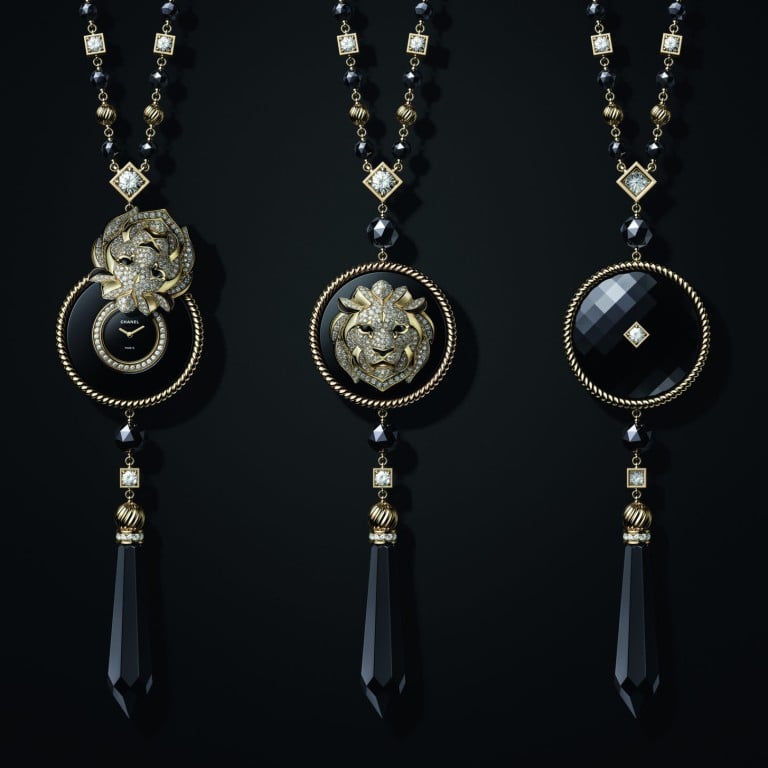Is the necklace watch 2023’s hottest timepiece trend? Watches and Wonders saw 400-year-old chain and pendant ‘sautoir watch’ styles make a sparkling high jewellery comeback – and Gen Z are sold

- In the age of the smartphone, why not wear a timepiece as a pretty as any piece of jewellery? That may be reason the 16th century style sautoir watch is making a timely comeback
- Before becoming an art deco favourite of 20s flappers, even gentlemen including King Charles II of England rocked pendant watches as a precursor to the pocket watch
The return of the sautoir watch, one of the most glamorous trends from this year’s Watches and Wonders fair in Geneva, makes complete sense. In the age of the smartphone, when we scarcely need a watch to check the time, well, why not wear a timepiece as a glittering jewel?
It’s certainly not the first time necklace watches have made an appearance. The style originated in the 16th century, a precursor to the pocket watch, and was typically the domain of wealthy women. In the 19th and early 20th centuries, techniques such as guilloche and enamel began to appear, while in the 1920s through to the 30s, the diamond and platinum styles suited the art deco aesthetic and shimmering flappers. Gentleman too wore a pendant watch – as the necklace watch was called – before the pocket watch took over when King Charles II of England introduced the waistcoat.

In recent years sautoir necklaces have been spied everywhere from Hermès to Cartier, and this year at the likes of Van Cleef & Arpels, Chanel, Jaeger-LeCoultre and Piaget, each offering a take on the necklace watch that showcased the savoir faire of each maison.
For Nicholas Bos, CEO and creative director of Van Cleef & Arpels, the maison’s take on the sautoir watch – with golden beading and precious and ornamental stones on six bejewelled models inspired by pocket watches from 17th century Europe – illustrated its long history and expertise in “secret watches”.

“When it comes to that tradition of secret watches that was quite important with this brand and in the world of jewellery historically, it’s quite nice to hide that watch in the pendant, or in the brooch, or indeed in the bracelet,” he says.
In keeping with the secret watches Van Cleef & Arpels first debuted in the 1920s, when it was considered terribly rude for elegant women at a dinner party to check the time, the new sautoir necklaces allow their wearer to discreetly do so by rotating the bejewelled motif on the dial. Three of these said dials are – for added dazzle – sprinkled with precious gemstones such as rubies, sapphires and emeralds.

The incorporation of the sautoir watch at Piaget this year fits with the Swiss maison’s celebration of its heritage, particularly its golden era among the international jet set in the 1960s and 70s when its client roster included the likes of Andy Warhol, Jackie Kennedy and Elizabeth Taylor. The brand first introduced its swinging sautoir watches in 1969, several of which were displayed on the Piaget booth at Watches & Wonders and which remain as alluring now as they were when worn at Studio 54 in its glory days. The pieces also spotlight the maison’s expertise in goldsmithing and gem cutting, and in encapsulating a certain, glamorous spirit. As Piaget head of patrimony Jean-Bernard Forot told British Vogue of this period for the maison, “It was not only an amazing period of creativity at Piaget, but also of social evolution and freedom in wider society. Women were no longer copying the style of their mothers, they wanted their own things, their own pleasures.”